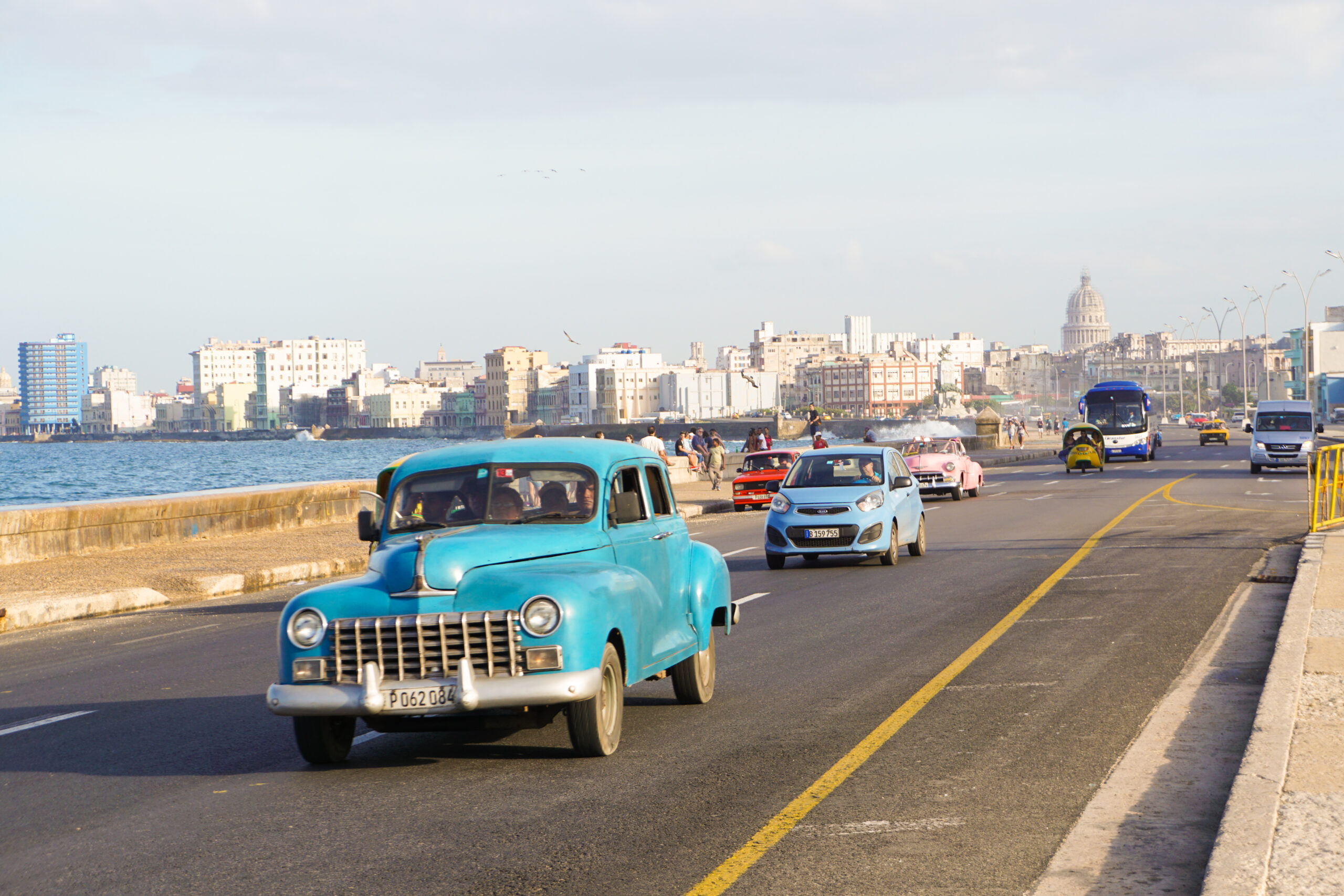4 Day Havana, Cuba Itinerary: Discover a City Frozen in the Past
In this 4 day Havana, Cuba itinerary, we will explore the beautiful streets of a city holding bouts of historical significance. Years of jaded and complicated history have turned Havana into one of the most unique destinations in the entire world. From pre-embargo vintage cars to striking colonial-era buildings to warm Cuban people, good music, and mouth-watering food, Havana has so much to offer. While a few days won’t do the city the justice it deserves, it is a perfect amount of time to get a little sample of everything and explore 17 things to do.
Happy sampling!
My mom was born and raised in Havana, Cuba, and while I am not going to do her dirty by revealing her age, I will say that she was born under the Castro regime. When she was 10 years old her, she moved with her family to meet relatives in Spain. Therefore, we had a different experience going to Havana compared to most tourists from the United States. We walked down my mom’s memory lane – looking for her childhood home, seeing where the department store my grandma worked at once stood. Of course, to not bore absolutely everyone else reading this blog, I have condensed the Havana itinerary to explore worthwhile attractions. We won’t be looking for my mom’s childhood home in this Cuba travel guide!
Table of Contents



General Considerations And Travel Tips About Havana, Cuba
Currency
Cuba uses the Cuban Peso (CUP). Until 2021, Cuba was operating with two currencies, where the CUC (Cuban Convertible Peso) had an exchange rate close to 1:1 with the USD. Originally created for tourism, you no longer have to worry about dealing with multiple forms of currency when traveling to Havana. However, for US visitors, credit and debit cards will not work, so make sure to bring enough CUP in cash. For more information on why and how Cuba got rid of the CUC (I’m nowhere near a financial expert), LSE wrote a great research paper titled Day Zero: how and why Cuba unified its dual currency system.
Visa
When visiting Cuba, a tourist visa card is required. A tourist visa is a form of visa that can be requested and processed online. Cuba requires that most international citizens process a tourist visa for a maximum stay of 90 days, but there are a handful of nationalities that are allowed visa-free entrance for 90, 60, and 30 days. Check out this list by Visa Cuba to check the rules for your specific nationality.
Language
The official language of Cuba is Spanish, though many people in the urban areas speak English, especially those in the tourism industry.
I will say that I cannot comment on being an American tourist in Cuba. I know that this is a very tricky subject and even though my family and I visited from the U.S., we did not portray ourselves as American. We spoke exclusively in Spanish and told locals that we were from Spain. Therefore, I can’t comment on the level of English in the country nor the overall sentiments of Cuban locals towards American tourists.
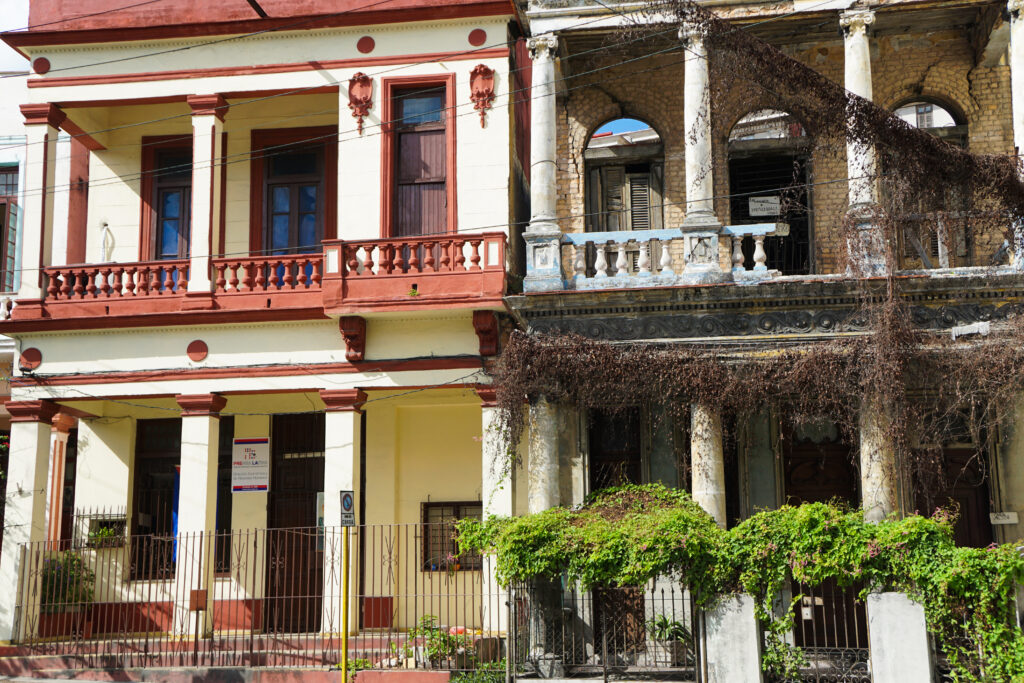
4 Day Havana, Cuba Itinerary
Day One – La Habana Vieja (Old Havana)
We are going to start our 4 day Havana, Cuba itinerary in Old Havana, known as La Habana in Spanish. Considered the downtown area of the capital, this neighborhood stands are the original foundation of the city. The Spanish founded Old Havana in 1519, and UNESCO declared it a World Heritage site in 1982. In this beautiful area, there are colonial-era houses and countless classic cars from the pre-embargo era – a site commonly associated with Havana. While you could easily spend days exploring Old Havana, we will see the main sites below.
(1) Catedral de San Cristobal
Our first stop is the most famous cathedral in all of Cuba – Catedral de San Cristobal. Completed in 1777 in the Plaza de la Catedral, it remains to be a well-preserved structure and continues to serve as the seat of the Roman Catholic Archdiocese of San Cristobal de la Habana. Recognize the name Cristobal? Christopher Columbus (Cristobal Colón in Spanish) was interred in the cathedral until he was moved to Seville, Spain in 1898. Admission to the cathedral is free and open daily, although tourists are not allowed to enter during special events.
(2) La Bodeguita del Medio
Next, let’s wave to La Bodeguita del Medio from the outside. One of the most famous restaurants in all of Havana, La Bodeguita del Medio serves local Cuban food, and many writers and politicians have passed through its doors. Here, you can get the most “authentic” mojito in the entire city. Even Hemingway frequented the restaurant and wrote about his experience. Now, we suggest that instead of entering La Bodeguita del Medio and fighting the crowds, take a quick peek at the paintings and the scribbles on the wall from the outside and continue walking to find a more laid-back restaurant.
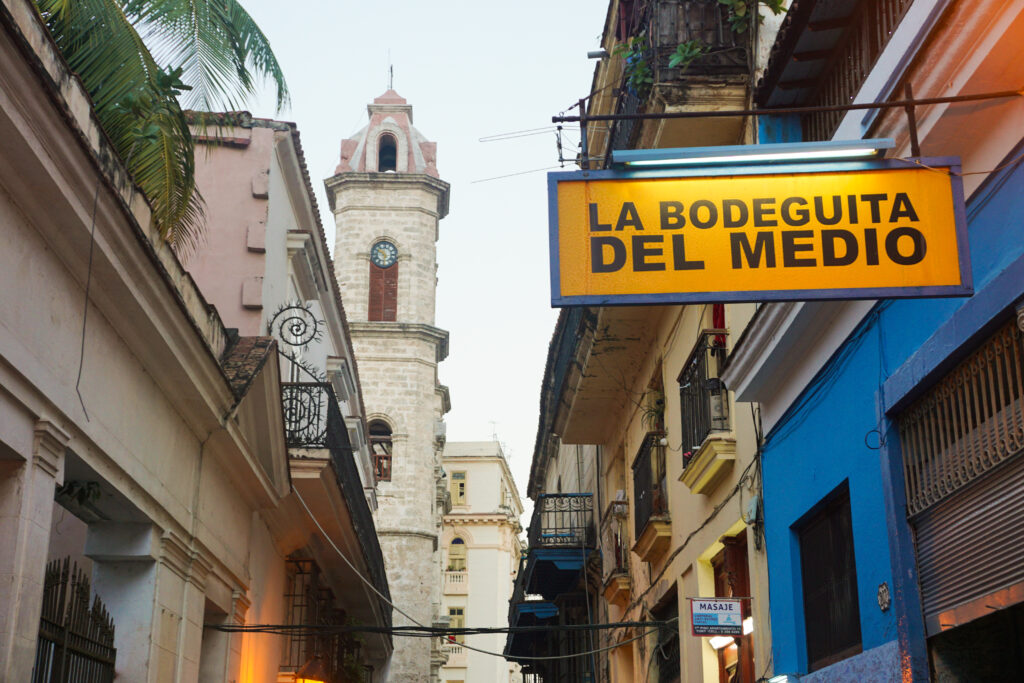
(3) Plaza de Armas
If you’re in the mood to shop for incredibly unique books and items, head to Plaza de Armas to check out the vendor stands. Plaza de Armas is Havana’s oldest plaza, with architecture from the 1700s and an original foundation from the 1520s. Although it has beautiful restaurants surrounding it and tons of gorgeous palm trees, Plaza de Armas is famous thanks to all of the secondhand books for sale. It is notoriously difficult to find Cuban artifacts outside of the country, so bringing home a book that Cuban vendors sold is incredibly special.
(4) Obispo Street
Stretch your legs before walking down Obispo Street, the longest in Old Havana. Obispo Street is famous for its plentiful shops and well-known restaurants lining the avenue. Obispo passes through Plaza de Armas, the National Museum of Natural History, and countless bookstores. You could certainly spend a whole day getting lost looking at all of the attractions on the street. If sprinting is more your speed, the street is only 1 kilometer in length, so those craving a daiquiri could sprint from Plaza de Armas to the bar El Floridita.
(5) Plaza Vieja
Tired of hearing about places that are must-visits thanks to their age? This one takes the cake! Plaza Vieja quite literally means Old Plaza in Spanish. Founded in 1559, Plaza Vieja has been the site of public executions, bullfights, processions, parties, and more over the years. Beautiful colonial buildings surround the plaza, all of which have balconies that allowed their previous wealthy residents to look down onto the events occurring below.
Additionally, the Plaza Vieja once had a life as a market square and was home to a grandiose marble fountain complete with dolphins. The latter, unfortunately, was demolished in the 1930s to make way for a parking garage. If you want to feel like the wealthy did looking down on the plaza, we recommend having a meal at Café Bohemia. Don’t forget to request their balcony seating and grab your binoculars to feel extra fancy.
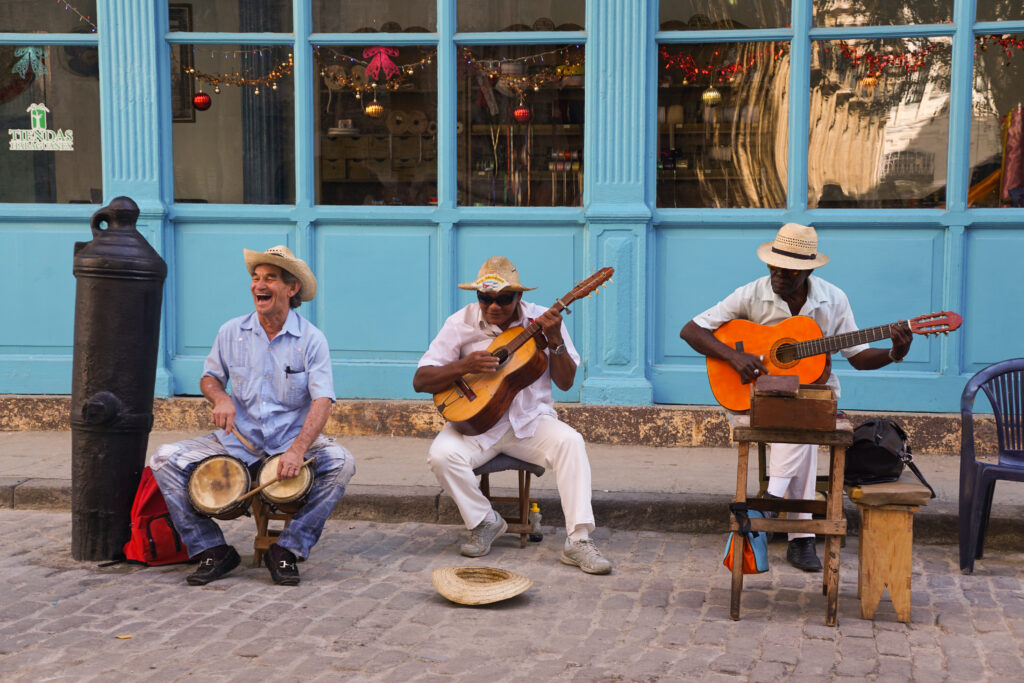
Day Two – Vedado Neighborhood
On our second day of our Havana exploration, we will be taking a trip to Vedado, an urban neighborhood known as the central business district of the city.
(6) University of Havana
First, let’s explore the University of Havana (La Universidad de La Habana), a public university founded in 1728. This date of establishment makes the university the oldest in Cuba as well as one of the first in the entire Americas. It’s worth a visit to walk around the campus and marvel at the old buildings. Don’t forget to say hello to the statue of Alma Mater. If you are as clueless as me, yes, while doing extra research for this article, I found out that Alma Mater has a couple of meanings. Of course, we all know it to mean the Latin phrase indicating a school that somebody has graduated from, but it is also a title of a type of mother goddess, commonly referring to Ceres and Cybele. Say hello to Ceres and Cybele for us.
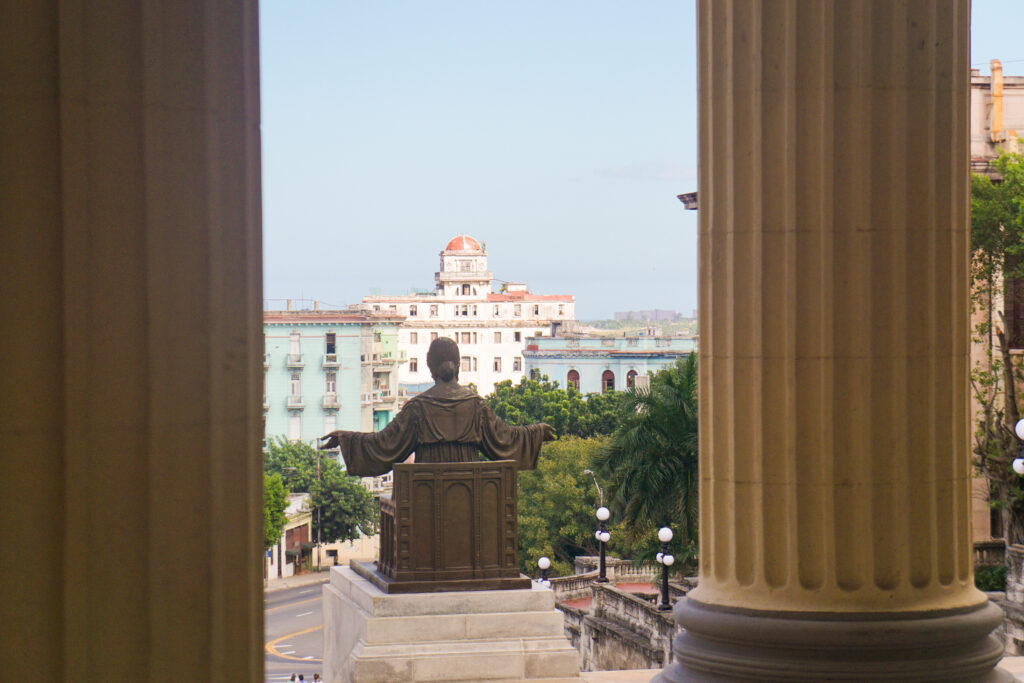
(7) Coppelia Ice Cream Parlor
Coppelia Ice Cream Parlor may be an activity that you have not seen on any other Cuban guide. However, it might come as a surprise that the government-run Coppelia is an ingenuous way to represent what has been happening in Havana since the Cuban Revolution. To keep it simple, Coppelia is an ice cream parlor in a massive building with multiple floors of seating, and up until 2021, had separate zoning areas depending on the currency you were going to use. Those paying in the peso (CUP) would go to an area serving just vanilla and banana ice creams. If you were lucky enough to bring the Cuban Convertible Peso (CUC) with you, your ice cream selection would quadruple.
While Coppelia is clearly an oversimplification of class differences in Cuba, it is a striking representation and necessary experience to have. We went to the CUP side as my mom grew up with only two flavor options, and the banana ice cream was pretty good.
(8) Go to Hotel Nacional for a Mojito
Hotel Nacional is a beautiful Spanish-style hotel in Havana that has quite a jaded history. It was the location of the Battle of the Hotel Nacional of Cuba which was a bloody siege between supporters and opposers of Fulgencio Batista in the 1930s. Now, it is a famous spot to grab a mojito, sit on the terrace, and overlook the crystalline ocean. The hotel sits atop Taganana Hill and provides a stunning backdrop to your cocktail. Arrive at the end of the day for an excuse to dress up a bit fancy and watch the sunset.
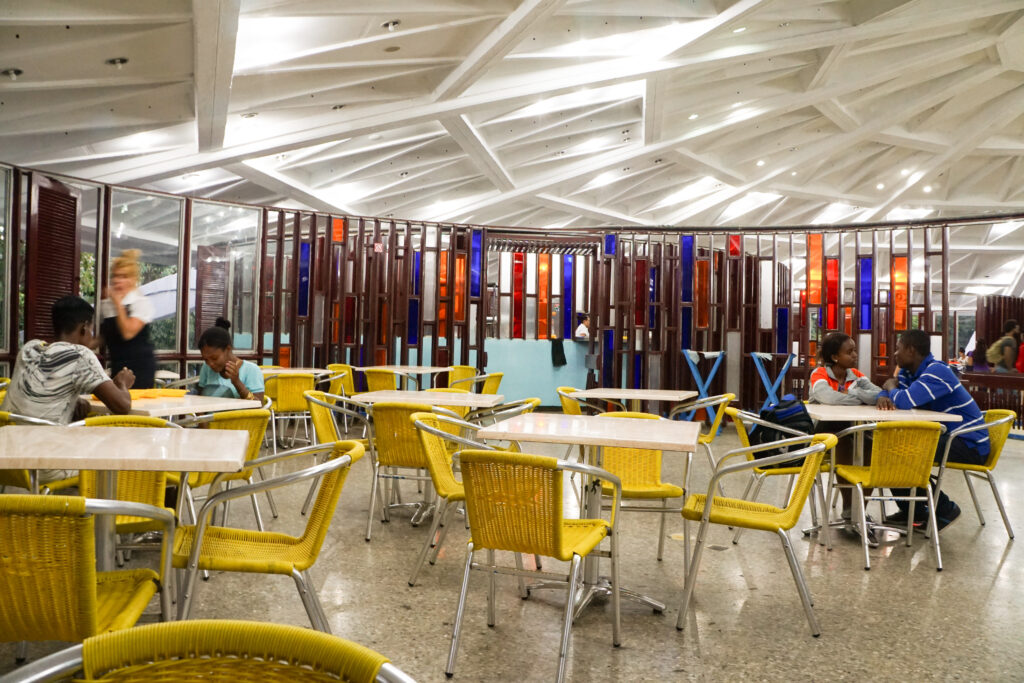
Day Three – Historic Plazas & Stunning Performances
On day three, we are going to hop around a bit between neighborhoods. Today is a great day to scratch “Ride a 1950s taxi” off your 4 day Havana, Cuba itinerary and bucket list.
(9) Plaza de la Revolución
Our first stop is the Plaza de la Revolución, one the largest public plazas in the world with a striking appearance. Plaza de la Revolución holds historical significance as the site of graduations and countless of Fidel Castro’s speeches. It would take multiple blog posts just to discuss the immense history behind the plaza, but today, it houses monuments for Jose Martí the Cuban poet, Camilo Cienfuegos, and Che Guevara.
(10) Colón Cemetery
Next, we’re heading to the Cristóbal Colón Cemetery, a National Monument of Cuba since 1987. With over 57 acres, there are a lot of sites to explore in the most important cemetery in the country. Culturally and architecturally, the cemetery is incredibly fascinating, with an ornate gate that welcomes you to the land. Christopher Columbus was never entered in this particular cemetery – as he was up in the Catedral de San Cristobal – but he remains the namesake. Colón Cemetery is so large that the aisles are labeled from A to M (North to South) and 1 through 17 (East to West, twice!).
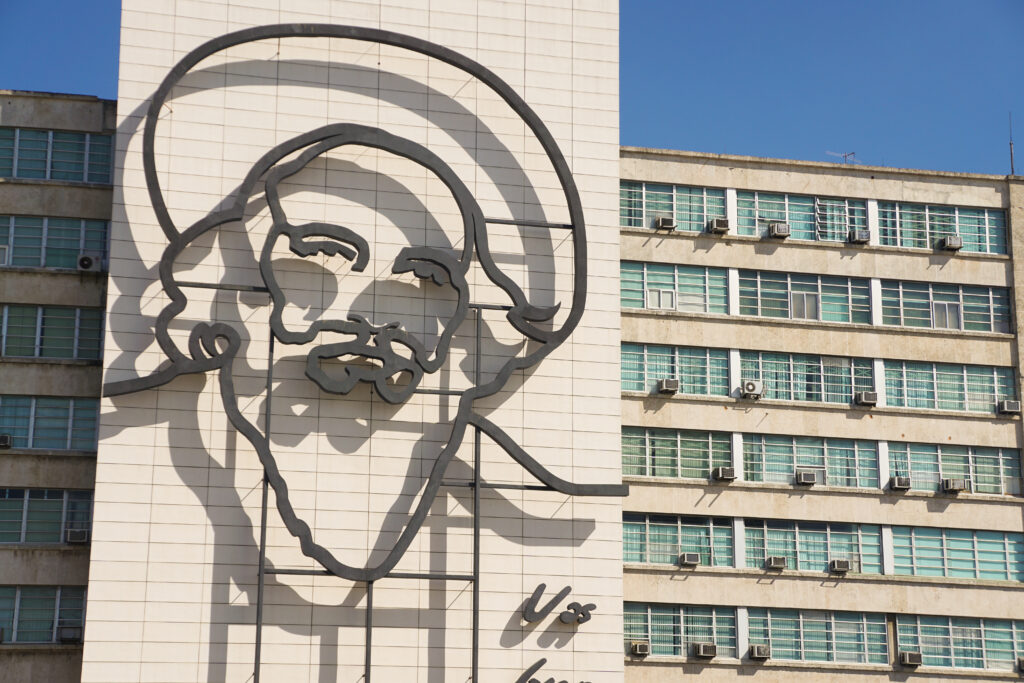
(11) Tropicana Show
Get transported back in time to the roaring 20s with one of the most jaw-dropping shows that you will ever watch. I was 17 years old when I went to the Tropicana on New Year’s Eve, and I thought that I had entered a different planet. There are no words to explain the absolute insanity of the dinner and show that takes place on stage. Part circus, park nightclub, part strip show, the Tropicana has it all.
Ticket prices are relatively pricey ranging from 75 USD for the standard show up to 300 USD for the New Year’s Eve spectacle. Different ticket bundles give you access to different show and dinner options. We highly recommend adding the Tropicana show to your 4 day Havana, Cuba itinerary because it brings up a spirit of the past that is unfindable anywhere else. What better city to watch the show than Havana, which itself is stuck in the 1950s. Is this a great place for budget travelers? Absolutely not. Is it a night that you will remember forever? Yes!
(12) Cuban Arts Factory
The night is not over after the Tropicana Show. If you are ready to take your shoes off and relax for the night, we actually have one more stop. We bet you’ve never explored an art gallery at night! The Cuban Arts Factory is an incredibly unique attraction. It doubles as an art gallery, cultural center, nightclub, general event space, and concert hall. It was built within a former cooking oil factory from 1910 and holds various halls. Given that the daily hours are 8:00 PM to 4:00 AM, it is no surprise that the Arts Factory is eclectic and unique. Each venue within the old factory has a different vibe so you can choose between quiet photography exhibits and pounding live performances.
Day Four – Coastline Exploration & Famous Cuban Cigars
On the last day, we are wrapping up our 4 day Havana, Cuba itinerary by recovering from last night with relaxing activities.
(13) Stroll Along the Malecón
Start today’s tour by taking in the marvelous Malecón, an avenue that stretches for 5 miles along the coast of Havana. Flanked by the beautiful ocean on one side and old buildings on the other, it’s truly a beautiful sight. Walk along the Malecón to feel the sea breeze or take a ride in a taxi.
If you’re staying on the west side of the city, chances are that you have already seen the Malecón on your way to Old Havana. This is your opportunity to take a slower stroll down the avenue and get a taste for one of the major lifelines of the city. Poorer Cubans often frequent the Malecón at night to catch fish to feed their families. You might be surprised at the run-down buildings along the Malecón, but even though time has not been kind, the Malecón remains a sight to be seen in Havana.
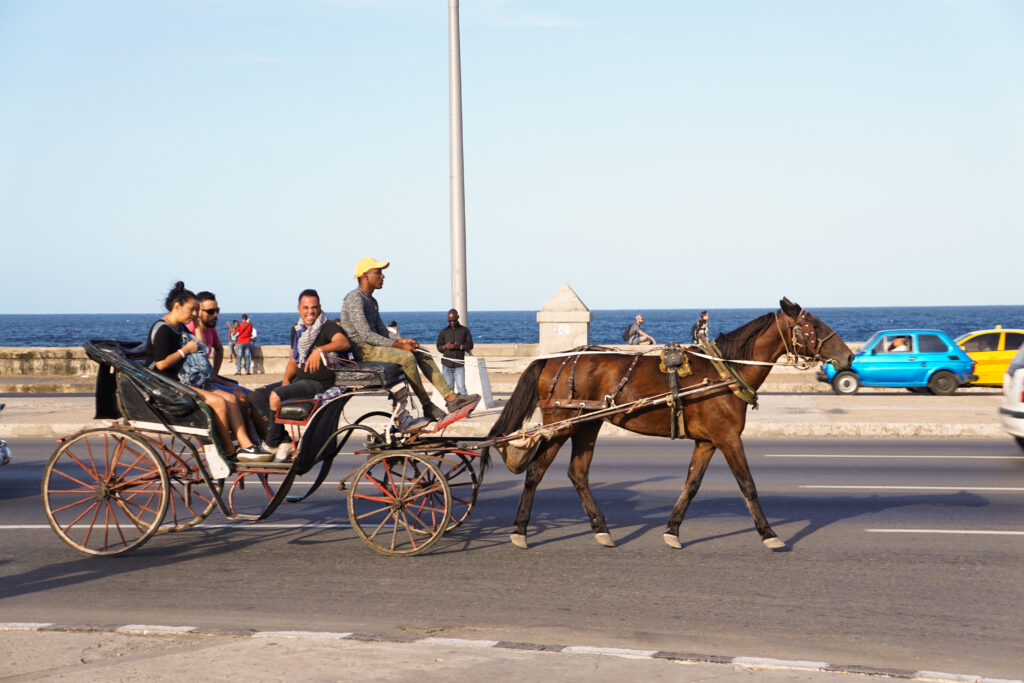
(14) Paseo del Prado
If you’re tired of avenues and streets to explore, we have just one more for you. Paseo del Prado – a beautiful promenade near Old Havana – is worth the walk. This avenue is the official dividing line between Old Havana and Havana’s central business district. Construction began in 1770 and was completed in 1830. It wasn’t until a French architect redesigned the street in 1925 that it began to flood with trees, sculptures, benches, and lion statues. Walking down Paseo del Prado is reminiscent of other world-famous avenues such as the Champs-Élysées in Paris.
If you are walking at a brisk pace, it will take approximately 20 minutes to complete the 1.5 kilometer exploration. We suggest taking your time as there is a lot to see on the way – beautiful buildings lining Paseo del Prado await you.
(15) Havana Club Museo Bar
Most people of legal drinking age have probably tried a Cuba libre cocktail, also known as a rum and coke. However, did you know that the name comes from the fact that the most authentic Cuba libre is made using Havana Club rum? Originally family-produced in 1934, the government nationalized production in 1959 following the Cuban Revolution. While Havana Club rum is available in other parts of the world, American tourists will once again jump at the opportunity to try real Cuban rum.
Luckily, the Havana Club Museo Bar allows travelers to do just that. The beautiful museum and distillery lets you try first-hand what a Cuba libre is supposed to taste like. Tours run every 15 minutes in different languages, and knowledgeable guides will take you through the history and process of making Cuban rum. The museum is a great addition to the 4 day Havana Cuba itinerary.
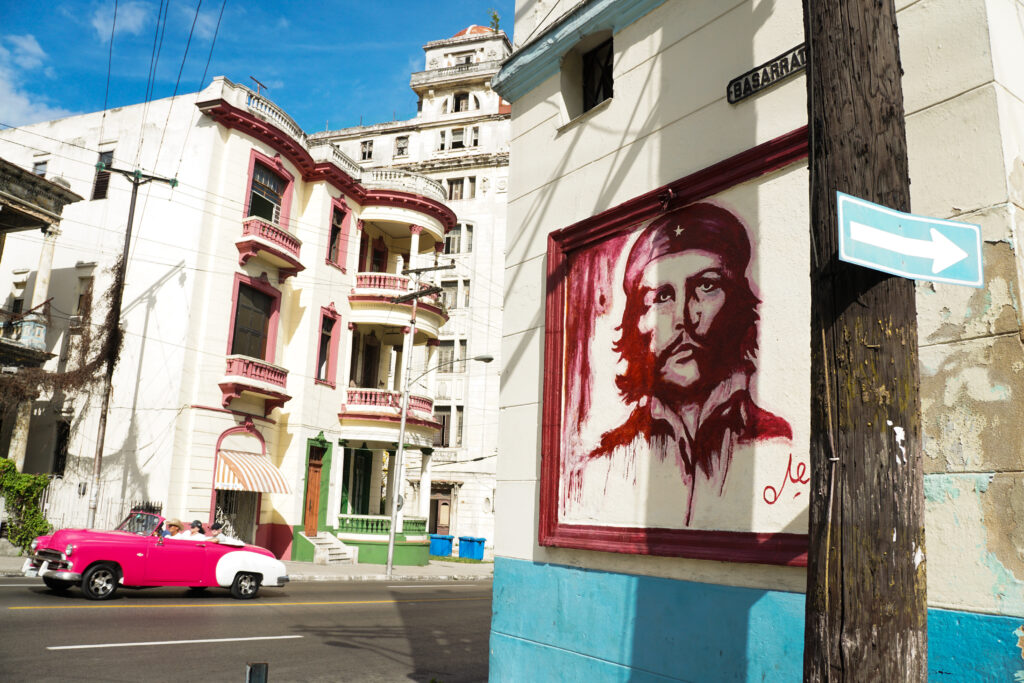
(16) Smoke a Cuban Cigar
To continue our tour of vices, let’s put down our glass of rum and coke and pick up a Cuban cigar. Those residing in the United States will rejoice at being able to try the best cigars in the entire world. There are many shops to choose from, and while I am by no means a cigar expert (I’ve taken two puffs in my entire life), David Savona’s guide is incredibly comprehensive and guides readers through all of the cigar options. If you are a big cigar aficionado, you might even consider taking a day trip to a traditional tobacco farm. Hopefully, the cigars are included in the ticket price of your day tour.
(17) Dinner at La Guarida
Let’s finish up our 4 day Havana, Cuba itinerary by having dinner in one of the most picturesque restaurants in the entire city. Starting out as a paladar (a privately-owned restaurant in people’s homes), La Guarida has become a prominent restaurant in Havana over the last 25 years. Previously having only 12 seats, La Guarida now has an outdoor and indoor dining room offering beautiful views of Old Town Havana and a terrace to enjoy your meal on a sunny day. La Guardia is a true emblem of authentic Cuban cuisine. Where the restaurant itself is well-kept and rather expensive, it sits on the second floor of a building that is otherwise completely abandoned. As you enter, you will pass through the dilapidated lobby and climb the once-ornate marble stairs to reach the restaurant. It is not hard to see how La Guarida has won multiple World Culinary Awards.
Where to Stay in Havana, Cuba
By now, it’s understandable that Cuba is an incredibly fascinating spot, and this is true for lodging and hotels as well. Havana has a few government-run hotels where can prices can reach up to 300 USD per night for a simple room. For that reason, we highly suggest staying in casas particulares, the Cuban version of an Airbnb. These establishments are usually private and family-run, where you occasionally stay in an apartment with local families. Due to the warm nature of Cubans, casa particulares can become B&Bs where hosts serve breakfast platters in the morning. Even this form of lodging needs government approval, so most will have a licensing agreement or specific emblem on the front door.
In terms of neighborhoods, Old Havana and Vedado are the best areas given their central location. Within both zones, there are options from luxury hotels to smaller and down-to-earth casa particulares.
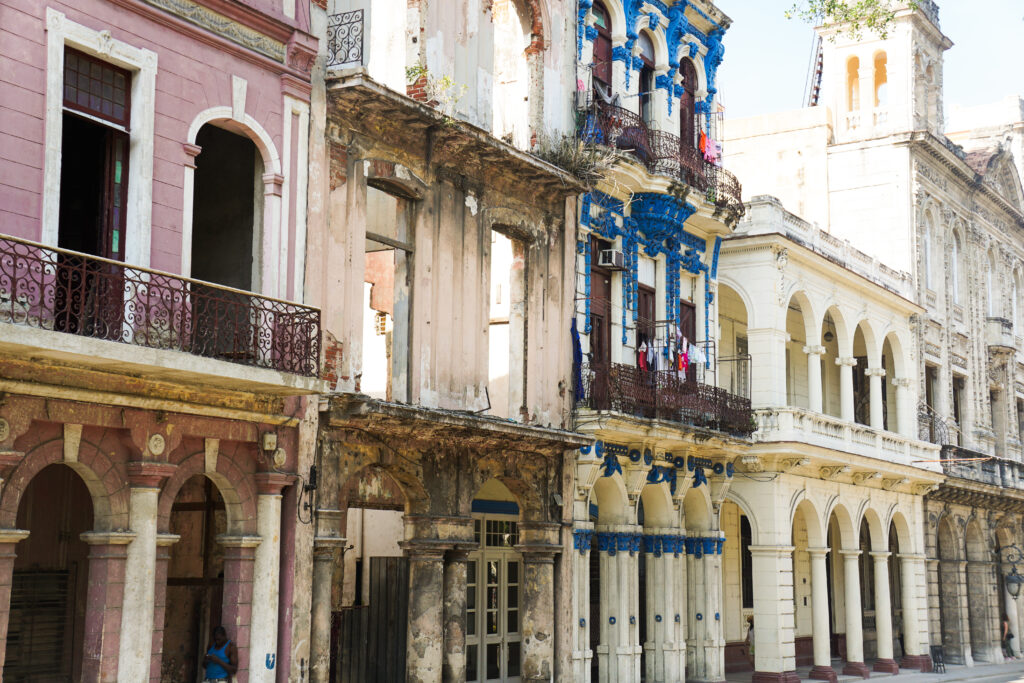
Frequently Asked Questions About Havana, Cuba
Is 4 days enough for Cuba?
Four days is enough time to spend in Havana, but it is certainly not enough to explore all of Cuba. If you only have four days, we suggest spending all of them in Havana given that there is much to see in this electric capital. For more in-depth travel, we love taking a free walking tour to learn from the locals. Interested in heading to the beach or exploring Santiago de Cuba? Add a couple more days to your trip to get a grasp of what the country has to offer outside of the capital city.
How many days should you spend in Havana, Cuba?
For a good taste of Havana and everything that Cuba’s capital has to offer, we suggest spending four days in the city. This timing will allow you to explore the well-known and eclectic neighborhoods. Even though each zone is walkable, once you venture outside of a given neighborhood, you will have to take a taxi. Therefore, allotting one day per major neighborhood is a good way to explore the city and learn what the locals are up to. If you want to spend more than four days in the area, we suggest branching out of the center area and heading east towards Santiago de Cuba or the beaches. The Valle de Viñales is a great destination for those interested in hiking, wine tasting, and outdoor adventures.
How much money should I bring to Cuba for 4 days?
Not including accommodation, travelers will average around 70 USD per day. The food and activities are cheap, and since the Cuban Convertible Peso (CUC) is no longer in use, you won’t have to worry about juggling multiple types of currencies.
Is Havana a walkable city?
Yes, in general, Havana is a walkable city. Walkability tends to occur within individual neighborhoods such as Vedado and Old Havana. In between neighborhoods, it is more convenient to take a taxi or rickshaw bike. Of course, as with most cities, be careful walking around at night, especially as a solo female traveler. While crime in Cuba is incredibly low, there will always be cases of petty pickpocketing.
That’s all for your trip to Havana, Cuba! We hope you enjoyed this 4 day Havana, Cuba itinerary, from 1950s cars to crisp mojitos. Looking to add another destination to your trip? Check out our Central America & Caribbean Destination Guides.
Happy sampling!

